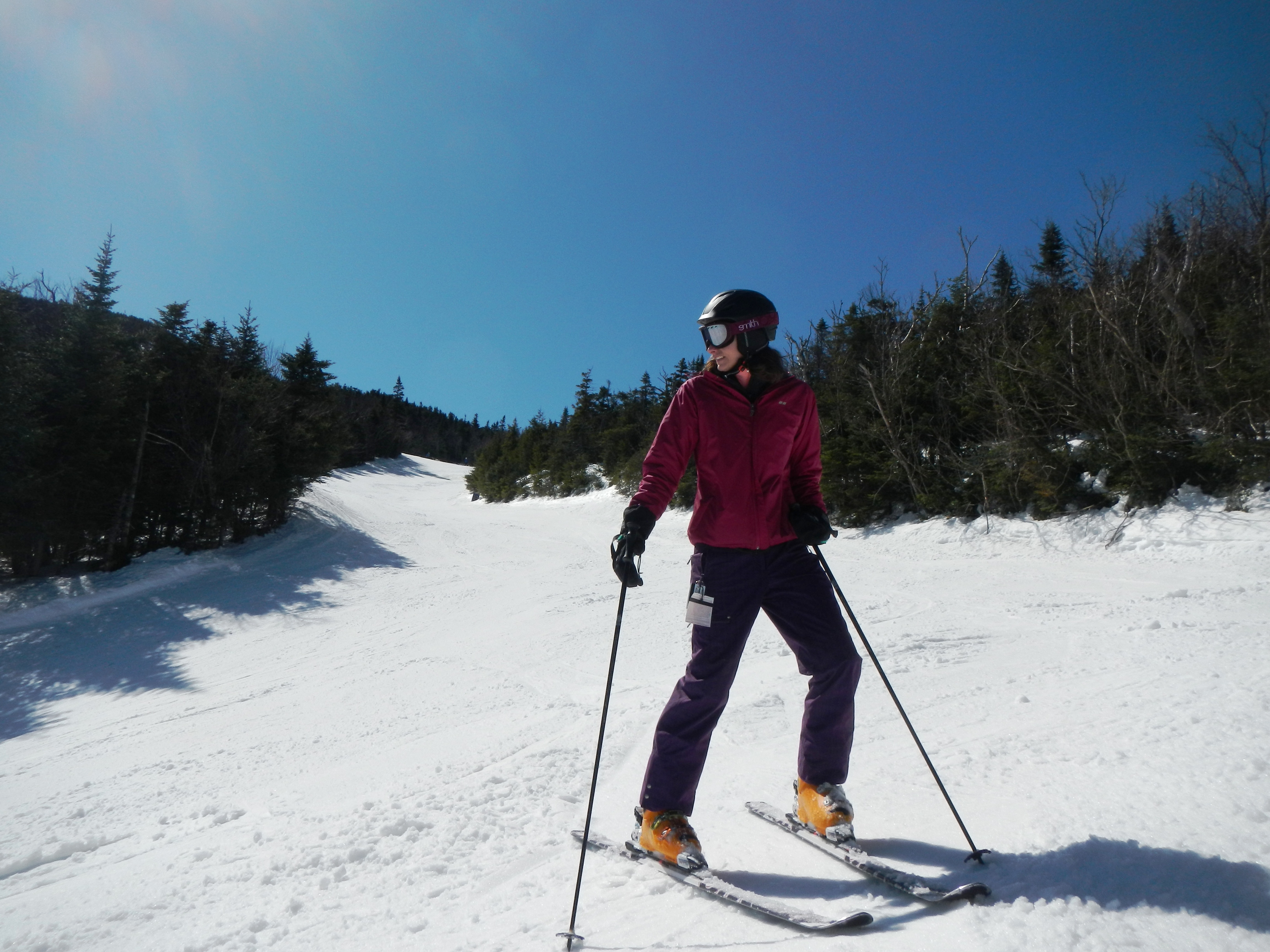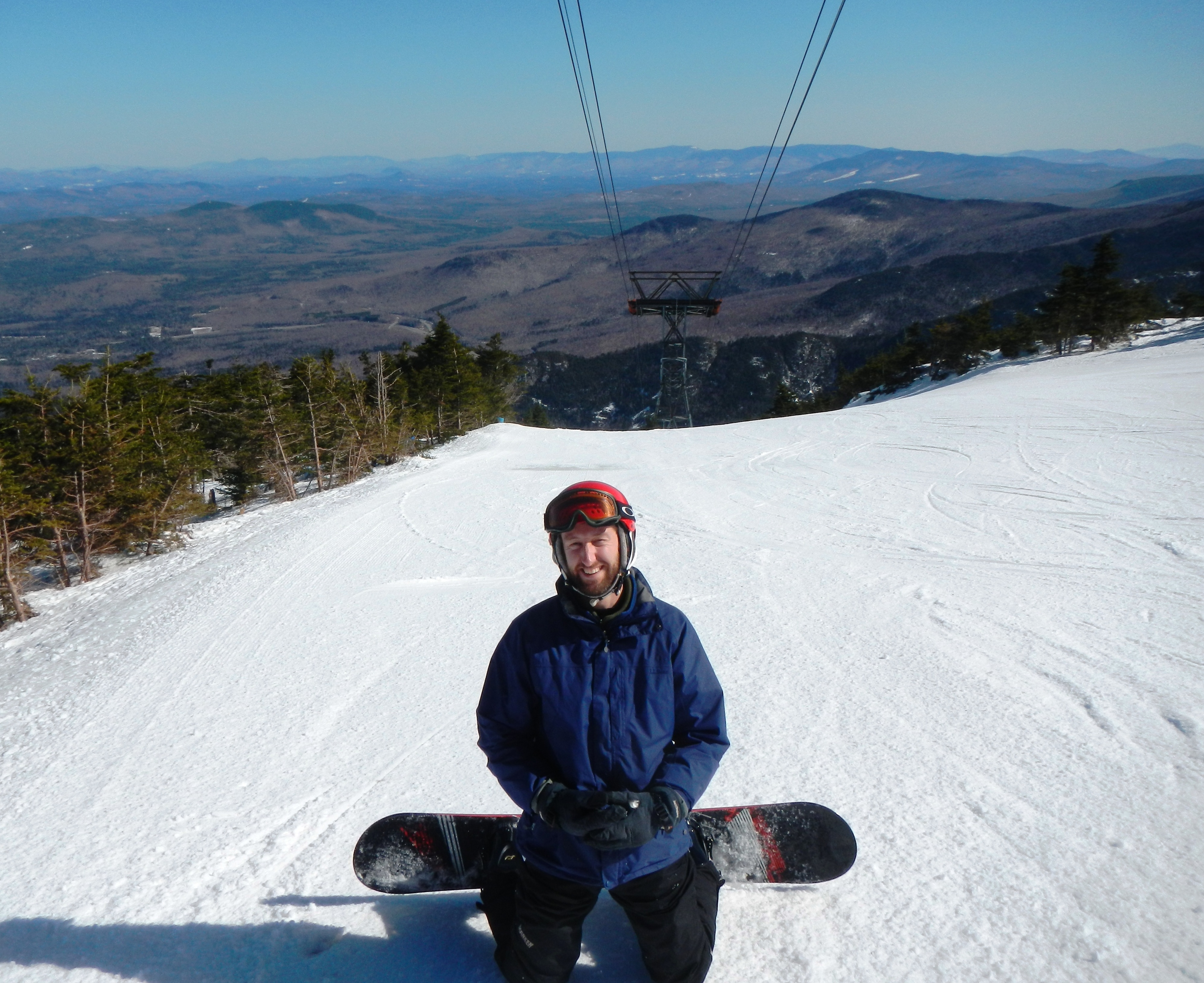Two years ago I decided to conduct an experiment that turned out to be bad for my ego but good for my marriage: could I teach my wife to downhill ski and not have to thumb through the Yellow Pages under “Lawyers, Divorce”?
Common wisdom tells us, “Don’t ever try to teach your wife to do anything that you think you’re really good at — especially if it involves going fast in the general direction of large trees.” You have to be careful because you might turn her off forever by endangering her life, or worse — by ordering her around like she’s six years old.
What you have to do is ease her into it. “Oh, look at that!” you’ll say, “We’re watching football again. Isn’t this kind of fun?” Don’t ever seem like you’re trying to teach her stuff; there’s no faster way to kill a relationship. Although when she’s hanging out with her new boyfriend, Juan, at least she’ll finally understand pass interference.
Happily though in my case, the answer to my experiment turned out to be “yes.” I was able to teach my wife to ski — without her whipping the wedding ring back at me on the chairlift.

How did I do it? I knew I had to avoid coming across as the know-it-all husband. So I asked myself: how could I seem as nonthreatening an instructor as possible? What could I strap onto my feet that would cause me to fall over with such amusing regularity, at such inopportune moments (on the bunny hill, in line for the magic carpet, on the side of the trail while urinating) that I’d come across more like comic relief than overbearing husband?
It was time to purchase a snowboard.
Now apart from a few ill-advised attempts years ago to swap my skis for a friend’s snowboard — which resulted in some amusing synchronized falls on the unloading ramp — I’d never been much tempted by snowboarding. After 25 years, skiing had become something I could do well without much thought — sort of like driving, or not cleaning out the garage. But when I strapped both feet into my snowboard — and then immediately fell down — everything suddenly looked quite different. The mountain seemed bigger. The trails seemed steeper. My garage still looked like “Chernobyl: The Day After.” Suddenly basic things I’d taken for granted on skis — such as “remaining upright for more than a fleeting moment” — held the potential for major embarrassment.
That’s because snowboards are like airplanes: get them in the sky — or pointed down a mountain — and they’re capable of extraordinary things. If you ever want to affix a perma-grin to your face, take a snowboard out in powder. But down on the ground — or in the liftline — snowboards, like airplanes, are basically useless.
Take walking around. Snowboarders look like people who have decided, for some reason, to walk with one foot normal, and one foot pointed directly back toward their own crotch. They look like they’re dragging a club foot that happens to have a snowboard attached to it — sort of like Verbal Kint in “The Usual Suspects,” except that they’re not secretly Keyser Soze, and they’d never kill their own family. Although you might start to consider it after walking with a snowboard long enough.
Even more embarrassing for me are the low-speed falls. There’s nothing more humbling for a skier who has gone several U.S. presidencies without so much as a stumble to strap into his board, stand up to go, and instantly fall back on his butt. You’re like that drunk guy in “Dazed and Confused” trying to stand up from his chair after about 17 beers, only if someone had also tied your shoelaces together.
Then there are the constant stops. Owning a snowboard is like driving a really defective car. You’re always having to pull over to perform basic maintenance. You try to drive to the store to pick up some chips and two miles later you’re pulling over to duct tape the fender back on. It’s the same in snowboarding: your buddies race off the lift toward the powder, but you can’t join them until you find a place to sit down and reattach your bindings. You have to do this on every run. By the time you’re done, your friends are gone, and there’s no powder left, except what’s now down the back of your pants. The only upside is that all this sitting in the snow is good practice for the number of falls you’re going to take.
The whole experience of falling did have its benefits though. For one thing, the humiliation of my newfound incompetence visited on me not only a deep humility that I so richly deserved, but also an unfamiliar sense of caution. After decades of unwittingly terrorizing intermediate skiers by roaring past them at insane speeds, close enough that I could have swiped their wallets (and on a few occasions did), suddenly I was the slow duck on the pond. Now I was the one shaking my fist at some genial, mid-40s mother of three who’d just cut close enough to give me heart palpitations (that is to say, had the gall to ski the same trail as me).
The reason I was so jumpy was because what I lack in skill, I make up for in planning. I can manage a somewhat decisive stopping turn to the left (on my heel edge) — provided I’ve been planning said turn since my arrival at the ski area that morning. On my right I have basically no way of stopping, apart from groping a spruce tree like Donald Trump sitting next to a strange woman in first class. Even this must be planned.
So when some lawyer from Westwood skis close enough that I can smell his choice of toiletries, it throws off my carefully laid plans (“aim for the soft-looking tree”). This also breaks my fragile mental concentration, which is busy concentrating really hard on such thoughts as, “Don’t fall, don’t fall, don’t fall . . . ” — which of course causes me to fall immediately.
On the bright side, when you do crash, your snowboard never comes off — so your falls don’t look quite as embarrassing to all those well-wishers on the chairlift — as opposed to standard ski falls, which litter the terrain with skis, poles, and other personal effects. So that makes it quite a bit less embarrassing. (Just nod and act like you agree with me.)

It worked like a charm, by the way. My wife not only stuck with skiing, but loves it. I truly believe I have snowboarding to thank. Not only did it give us a feeling of learning something together, but because I looked so foolish, it erased the gap between us. The skiing instruction I gave her — while undoubtedly exquisite — was normally dictated from some position of vague injury on the bunny slope. That’s a lot less off-putting than having a hovering expert skier lobbing disinterested quips about your poor technique while looking as bored as Donald Trump in a library. I like to think that most of those falls, in fact, were not related to any lack of skill; they were subconsciously motivated by a desire to appear nonthreatening. (Again, just nod and pretend that’s at all likely.)
In the end though, I’m glad I took up snowboarding. Not only has it made me a safer skier and a humbler person, but I believe it played a direct role in my wife getting hooked on skiing — which in turn has ensured that I don’t have to take up a winter sport such as “quilting” if I want to spend quality time with her.
If that means that I spend most of my time on my butt in the snow, I’ll take it.